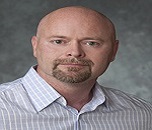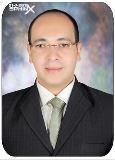Sessions
Stem Cell Engineering & Cellular Reprogramming
Advancements in stem cell engineering have revolutionized regenerative medicine, enabling the reprogramming of somatic cells into induced pluripotent stem cells (iPSCs) with remarkable therapeutic potential. These engineered cells offer unprecedented opportunities for personalized medicine, disease modeling, and drug discovery. Cellular reprogramming techniques allow researchers to manipulate cell fate, enhance tissue regeneration, and restore function in damaged organs. Current research focuses on optimizing reprogramming efficiency, reducing immunogenicity, and ensuring genomic stability for safe clinical applications. Innovative approaches are integrating synthetic biology and genome editing to create next-generation stem cell lines capable of targeted differentiation and enhanced regenerative capacity. Additionally, advances in 3D culture systems and organoid development provide functional platforms for testing regenerative strategies. The session explores breakthroughs in epigenetic modulation, transcription factor-mediated reprogramming, and scalable stem cell production. Challenges in translating laboratory findings into clinical therapies, such as ensuring reproducibility, overcoming tumorigenicity, and achieving regulatory compliance, will also be addressed. Attendees will gain insights into the latest protocols, mechanistic understanding, and practical applications of stem cell engineering, paving the way for transformative interventions in tissue repair, organ regeneration, and precision medicine.
Gene Editing, CRISPR Therapies & Regenerative Genomics
The integration of gene editing technologies, particularly CRISPR-Cas systems, into regenerative medicine has opened new frontiers for treating genetic and degenerative diseases. CRISPR-mediated genome engineering allows precise correction of pathogenic mutations, enabling the creation of patient-specific regenerative therapies. This session highlights innovations in gene-edited stem cells, organoids, and tissue models for translational applications. Researchers are exploring targeted approaches to enhance tissue repair, improve cellular function, and restore organ systems. Regenerative genomics combines high-throughput sequencing, bioinformatics, and functional genomics to identify key genes and pathways driving tissue regeneration. Ethical considerations, off-target effects, and delivery mechanisms remain critical challenges, with ongoing research focused on improving specificity, efficiency, and safety. Clinical trials utilizing CRISPR-edited hematopoietic stem cells, cardiomyocytes, and neuronal cells demonstrate the therapeutic potential of gene editing for conditions such as muscular dystrophy, inherited cardiac disorders, and neurodegenerative diseases. The session also emphasizes the role of epigenome editing, transcriptional regulation, and synthetic gene circuits to enhance regenerative outcomes. Attendees will explore how CRISPR and regenerative genomics are transforming personalized medicine, offering scalable, targeted, and next-generation therapeutic solutions for complex human disorders.
3D Bioprinting, Organ Fabrication & Bioartificial Tissues
3D bioprinting represents a transformative approach in regenerative medicine, allowing precise fabrication of living tissues and organ constructs. Using patient-specific cells, bioinks, and scaffold materials, researchers can design complex tissue architectures that mimic native organ structures and functions. Advances in bioprinting technology have enabled the production of vascularized tissues, multi-layered organoids, and functional microtissues suitable for transplantation and disease modeling. Bioartificial tissues provide platforms for drug testing, toxicology studies, and personalized therapeutics, reducing reliance on animal models. Integration of stem cells and growth factors enhances tissue maturation, cellular organization, and regenerative potential. Current research focuses on improving printing resolution, ensuring cell viability, and establishing scalable, reproducible manufacturing processes for clinical translation. Bioprinted constructs are being explored for cardiac patches, liver tissue, cartilage repair, and skin regeneration. Challenges include vascularization, immunocompatibility, mechanical stability, and regulatory approvals. This session covers cutting-edge developments, including multi-material bioprinting, organ-on-chip integration, and hybrid biomaterial design, providing attendees with insights into how 3D bioprinting is shaping the future of organ fabrication and personalized regenerative therapies.
Tissue Engineering, Biomaterials & Smart Scaffolds
Tissue engineering integrates cells, biomaterials, and biochemical cues to restore, maintain, or improve tissue function. Smart scaffolds act as temporary matrices that guide cell growth, differentiation, and tissue regeneration while responding to environmental stimuli such as pH, temperature, or mechanical stress. Biomaterial innovationsincluding hydrogels, nanofibers, and bioactive polymers—enhance cellular attachment, proliferation, and vascularization. The session explores strategies for engineering functional tissues for musculoskeletal, cardiac, neural, and dermal applications. Emphasis is placed on designing biocompatible, biodegradable, and bioactive scaffolds capable of delivering growth factors, signaling molecules, or gene therapies to enhance repair. Advances in dynamic, stimuli-responsive scaffolds allow controlled release and spatiotemporal guidance for regenerative processes. Preclinical studies demonstrate scaffold-assisted regeneration of cartilage, bone, cardiac patches, and neural tissues, while clinical translation addresses challenges in scalability, reproducibility, and regulatory compliance. Attendees will gain insights into the convergence of material science, cellular engineering, and molecular biology to develop next-generation regenerative solutions that bridge the gap between laboratory research and therapeutic applications.
Regenerative Immunology & Immune Modulation
Regenerative immunology investigates the interplay between the immune system and tissue repair, highlighting how immune modulation can enhance stem cell therapies and regenerative outcomes. Immune cells orchestrate inflammation, healing, and tissue remodeling, making them critical targets for intervention in regenerative medicine. Strategies include manipulating macrophage polarization, modulating T-cell responses, and leveraging regulatory immune cells to improve graft survival and tissue integration. This session explores immunomodulatory biomaterials, cytokine therapies, and engineered immune cells to create regenerative niches that optimize stem cell engraftment and functional recovery. Clinical applications focus on autoimmune disorders, organ transplantation, wound healing, and musculoskeletal regeneration. Advanced approaches integrate gene editing and biomaterials to engineer immune-compatible regenerative therapies. Challenges include understanding immune heterogeneity, avoiding adverse immune reactions, and achieving long-term tolerance. Attendees will learn about cutting-edge research in immune-stem cell interactions, immune-privileged scaffolds, and translational strategies to harness immune responses for enhanced regenerative medicine outcomes.
Exosomes, Extracellular Vesicles & Cell-Free Therapeutics
Exosomes and extracellular vesicles (EVs) have emerged as critical mediators of intercellular communication, playing a central role in tissue repair and regeneration. These nanoscale vesicles, secreted by stem cells and other cell types, carry proteins, lipids, and nucleic acids that can modulate immune responses, stimulate angiogenesis, and promote cellular proliferation. Cell-free therapies leveraging exosomes provide a promising alternative to direct stem cell transplantation, reducing risks of tumorigenicity, immune rejection, and ethical concerns. Advances in isolation techniques, cargo engineering, and targeted delivery systems have enhanced the therapeutic potential of exosomes for cardiovascular, neurological, and musculoskeletal disorders. Clinical studies demonstrate their efficacy in wound healing, cardiac repair, and neuroprotection. This session explores bioengineering strategies to load exosomes with regenerative molecules, improve biodistribution, and integrate with biomaterials for controlled release. Attendees will gain insight into the mechanisms, clinical applications, and regulatory challenges of EV-based therapies, positioning them as a transformative tool in next-generation regenerative medicine.
Clinical Translation of Stem Cell Therapies
Clinical translation bridges laboratory discoveries with patient-centered therapies, focusing on safety, efficacy, and regulatory compliance. Stem cell-based interventions are being evaluated in cardiovascular, neurological, musculoskeletal, and metabolic disorders, demonstrating remarkable regenerative potential. The session emphasizes designing preclinical studies, optimizing delivery methods, and addressing immunogenicity, tumorigenicity, and scalability challenges. Advances in autologous, allogeneic, and engineered stem cells enhance reproducibility and therapeutic outcomes. Regulatory frameworks, good manufacturing practices (GMP), and standardized protocols are critical for clinical adoption. Key case studies illustrate successful trials in cardiac repair, spinal cord injuries, and hematopoietic disorders. Strategies for patient stratification, personalized dosing, and monitoring regenerative efficacy are highlighted. Attendees will explore translational pipelines, industry partnerships, and emerging clinical technologies that accelerate the journey from bench to bedside. Discussions include challenges in funding, ethical considerations, and post-therapy follow-up, equipping researchers and clinicians with comprehensive insights to advance regenerative medicine into mainstream healthcare.
Regeneration in Neurodegenerative & Spinal Cord Disorders
Neurodegenerative and spinal cord disorders present significant clinical challenges due to the limited regenerative capacity of neural tissue. Stem cell therapies, neurotrophic factors, and biomaterial scaffolds are advancing interventions aimed at repairing neural circuits and restoring function. This session focuses on innovative strategies, including iPSC-derived neurons, oligodendrocytes, and glial progenitors, for disease modeling and therapeutic transplantation. Preclinical studies show promising results in spinal cord injuries, Parkinson’s disease, and Alzheimer’s disease, highlighting cell survival, integration, and synaptic connectivity. Gene editing, exosome therapy, and biomaterial-supported neuroregeneration are emerging to enhance functional outcomes. Challenges include immune rejection, delivery efficiency, and long-term safety, necessitating multidisciplinary approaches combining neurobiology, bioengineering, and clinical expertise. Attendees will gain insights into translational research, regenerative mechanisms, and potential clinical pathways for repairing damaged neural networks and improving quality of life for patients with debilitating neurological conditions.
Cardiac, Vascular & Musculoskeletal Regeneration
Regenerative strategies targeting the heart, vasculature, and musculoskeletal system are reshaping the treatment of chronic injuries and degenerative diseases. Stem cells, gene therapies, biomaterials, and tissue-engineered constructs enable repair, remodeling, and functional restoration of damaged tissues. Cardiac regeneration focuses on cardiomyocyte replacement, angiogenesis, and myocardial repair, while vascular therapies target endothelial function and vessel integrity. Musculoskeletal regeneration addresses cartilage, bone, and tendon repair through scaffolds, growth factors, and mechanical stimulation. Preclinical and clinical studies demonstrate enhanced tissue integration, improved mobility, and reduced disease progression. Innovations in 3D printing, biomimetic scaffolds, and bioreactors support scalable regenerative approaches. This session explores translational strategies, clinical outcomes, and regulatory considerations, offering insights into combining cellular, molecular, and bioengineering approaches to restore structure and function across critical organ and tissue systems.
Regenerative Approaches in Diabetes & Metabolic Disorders
Regenerative medicine offers new hope for diabetes and metabolic disorders through pancreatic islet regeneration, stem cell therapies, and gene editing. Cellular interventions aim to restore insulin production, improve glucose homeostasis, and reduce complications. Strategies include differentiation of pluripotent stem cells into insulin-producing beta cells, transplantation, and immunomodulatory approaches to prevent autoimmunity. Gene editing techniques like CRISPR correct genetic defects in monogenic diabetes, while bioengineered scaffolds and encapsulation enhance cell survival and functionality. Emerging therapies target obesity, lipid metabolism, and metabolic syndrome through cellular and tissue-engineered interventions. Preclinical and clinical studies show promising improvements in glycemic control, organ protection, and systemic metabolic balance. This session highlights challenges including immune rejection, delivery efficiency, scalability, and regulatory compliance, while emphasizing the integration of precision medicine, biomaterials, and cellular therapies to create innovative solutions for patients suffering from chronic metabolic disorders.
Bioinformatics, AI Models & Predictive Regeneration
Bioinformatics and artificial intelligence (AI) are revolutionizing regenerative medicine by enabling predictive modeling, personalized therapies, and accelerated discovery pipelines. High-throughput omics data—genomic, transcriptomic, proteomic—combined with machine learning algorithms, allow identification of regenerative pathways, biomarkers, and therapeutic targets. AI-driven predictive models optimize stem cell differentiation, tissue engineering strategies, and therapeutic dosing. Computational simulations guide scaffold design, organoid development, and clinical trial planning. Integration with imaging and clinical datasets enhances monitoring of regenerative outcomes and patient stratification. This session explores cutting-edge algorithms, deep learning applications, and data-driven approaches that inform decision-making in stem cell therapies and tissue engineering. Ethical considerations, data privacy, and model validation are discussed. Attendees gain insight into how bioinformatics and AI accelerate innovation, improve therapeutic precision, and reduce time from discovery to clinical implementation in regenerative medicine.
Cancer Stem Cells & Targeted Therapeutics
Cancer stem cells (CSCs) drive tumor growth, metastasis, and therapy resistance, making them critical targets in regenerative oncology. This session explores mechanisms regulating CSC self-renewal, differentiation, and interaction with the tumor microenvironment. Therapeutic strategies focus on selective targeting of CSCs using gene editing, immunotherapy, and nanomedicine-based drug delivery systems. Biomarkers and molecular profiling enable precision interventions, minimizing off-target effects and enhancing treatment efficacy. Regenerative principles are applied to restore normal tissue architecture post-therapy, reduce recurrence, and promote organ function. Preclinical and clinical studies demonstrate efficacy in hematological malignancies, solid tumors, and metastatic cancers. Attendees will examine innovative techniques, translational challenges, and future directions in CSC-targeted regenerative oncology.
Aging Biology, Longevity Science & Cellular Rejuvenation
Aging and age-related decline represent major challenges for regenerative medicine. Cellular senescence, telomere shortening, and stem cell exhaustion impair tissue regeneration and function. This session examines strategies to reverse aging effects, including senolytic therapies, stem cell rejuvenation, epigenetic reprogramming, and organoid-based interventions. Bioengineering approaches aim to restore tissue homeostasis and organ functionality. Integrating AI, genomics, and personalized medicine allows targeted rejuvenation therapies. Clinical studies explore functional recovery, disease prevention, and lifespan extension. Attendees will learn about innovative approaches in cellular rejuvenation, translational applications, and emerging technologies that aim to delay or reverse age-related tissue degeneration while promoting healthy longevity.
Ethical, Regulatory & Quality Control Frameworks
Ethical and regulatory considerations are critical for the safe translation of regenerative therapies. This session focuses on guidelines governing stem cell research, gene editing, tissue engineering, and clinical trials. Key topics include informed consent, patient safety, standardization of manufacturing, and compliance with international regulatory bodies. Quality control ensures reproducibility, efficacy, and safety of cellular and tissue-based therapies. Emerging challenges involve balancing innovation with ethical responsibility, addressing long-term follow-up, and ensuring equitable access. Attendees gain insights into frameworks that guide ethical research, clinical translation, and commercialization of regenerative medicine products.
Commercialization, Biobanking & Industry Innovations
Commercialization and biobanking are pivotal in scaling regenerative medicine from laboratory research to clinical applications. Biobanks provide standardized, high-quality stem cell and tissue samples essential for research and therapy. Innovations in manufacturing, logistics, and regulatory compliance support industrial-scale production. Strategic partnerships between academia, biotech, and industry accelerate translation and commercialization. This session highlights challenges in intellectual property, market adoption, and cost-effectiveness. Attendees explore cutting-edge industrial applications, scalable solutions, and business models that drive sustainable growth in regenerative medicine.








